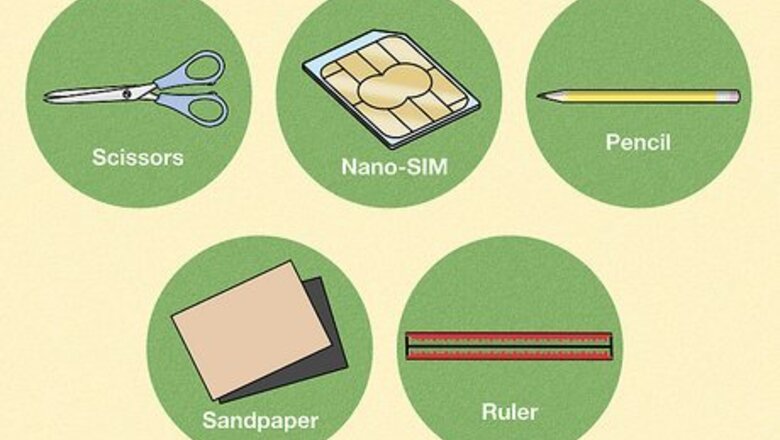
views
- Cutting the SIM card incorrectly can render it impossible to use or repair. Only cut it if it's absolutely necessary.
- Use another nano-SIM card to mark the size on the SIM card. Use scissors to cut just above the line.
- Do not cut into the gold or metal part of the SIM card. File the excess plastic and test the fit in the tray. Repeat until it fits.
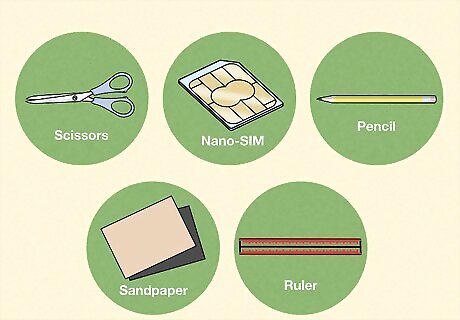
Gather your equipment. You'll need the following items in order to cut your SIM card: A pair of straight, sharp scissors A nano-SIM card for comparison A pencil A file (or sandpaper) A ruler
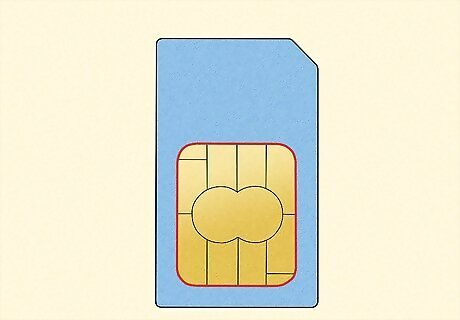
Know what to avoid. When cutting a SIM card, you don't want to cut into the gold or metal part of the card, as doing so will render the SIM card useless (and irreparable). The best way to ensure that you don't accidentally cut into the metal is by cutting wider than is necessary and then using your file or sandpaper to get the SIM card down to the size you need. If you're trying to install a SIM card in an Android or iPhone, be sure to contact your carrier first. In most cases, you'll receive a new SIM card instead. Otherwise, the old SIM card can be transferred or switched to your new device.
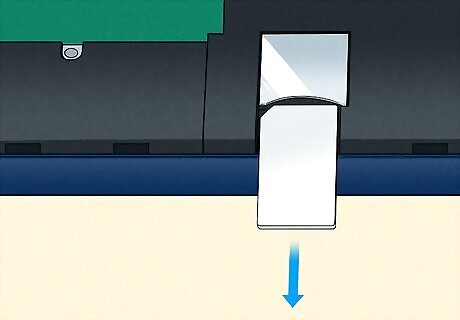
Eject your old phone's SIM. If you don't already have the SIM card that you want to cut removed from your old phone, remove it before proceeding.
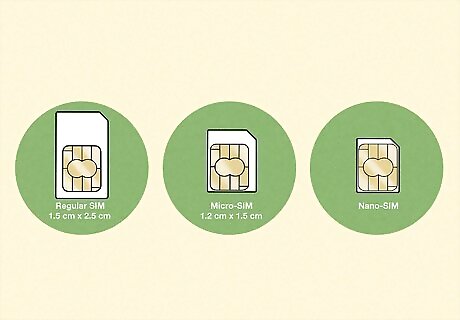
Determine the current SIM card's size. Using your ruler, figure out which of the following SIM cards you have to cut: Micro-SIM: Measures 12 millimetres (1.2 cm) by 15 millimetres (1.5 cm). Standard SIM: Measures 15 millimetres (1.5 cm) by 25 millimetres (2.5 cm).
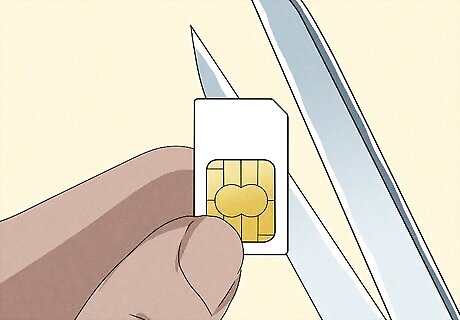
Trim the excess from a standard SIM card. If you're trying to cut a standard SIM card, start by cutting along the line created by the cut-out sections on the left side of the card. This should leave a couple of millimeters' worth of space between the left edge of the card and the metal part of the SIM card. The left side of the standard SIM card is the side that doesn't have an angled piece missing from the corner. Skip this step if you have a micro-SIM card.

Place your nano-SIM card on top of the other SIM card. You cannot adequately measure the amount of space to cut without using a nano-SIM card as a guide. To ensure that you do this in as uniform a way as possible, do the following: Place the standard or micro-SIM card on a flat surface. Make sure that the angled corner of the SIM card is in the top-right corner of the card when looking down at it. Place the nano-SIM card on top of the SIM card. Make sure that the angled corner of the nano-SIM card is in the top-right corner of the card when looking down at it. Make sure that the bottom-left-most corner of the nano-SIM card is lined up over the bottom-left-most corner of the SIM card that you're going to cut.
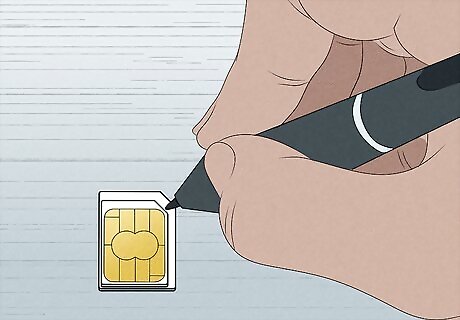
Trace an outline of the nano-SIM onto the bottom SIM card. Using your pencil, draw a line around the nano-SIM card's edge. This will help guide the amount that you cut.
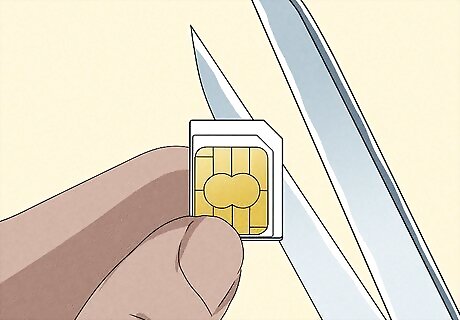
Cut around the outline. It's best to err on the side of caution, so don't worry about cutting a little bit wider than the outline.
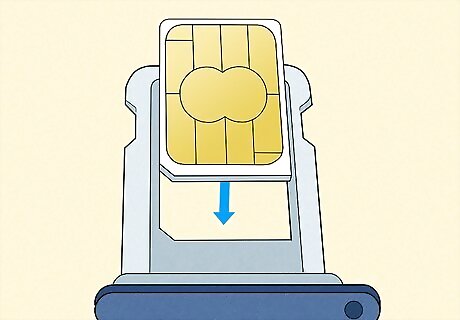
Try to place your SIM card in its tray. It most likely won't fit, but doing this will give you an idea of how much of the card needs to be filed down.

File down the remaining plastic. With your nail file or sandpaper, remove most of the plastic border on the bottom and sides of the SIM card. Use the existing nano-SIM card that you have as a reference for this step. Keep the majority of the plastic at the top of the SIM intact until after you've tested the SIM card's fit. Keep in mind that a nano-SIM card still has about a millimeter of plastic around its perimeter, so stop short of removing 100% of the plastic.

Try to place your SIM card in its tray again. If it fits, you've successfully cut down the SIM card to a nano-SIM size; at this point, you're free to test the nano-SIM card in your phone by inserting the SIM card and powering on the phone. If the SIM card still doesn't fit, you'll need to file it down some more.

















Comments
0 comment